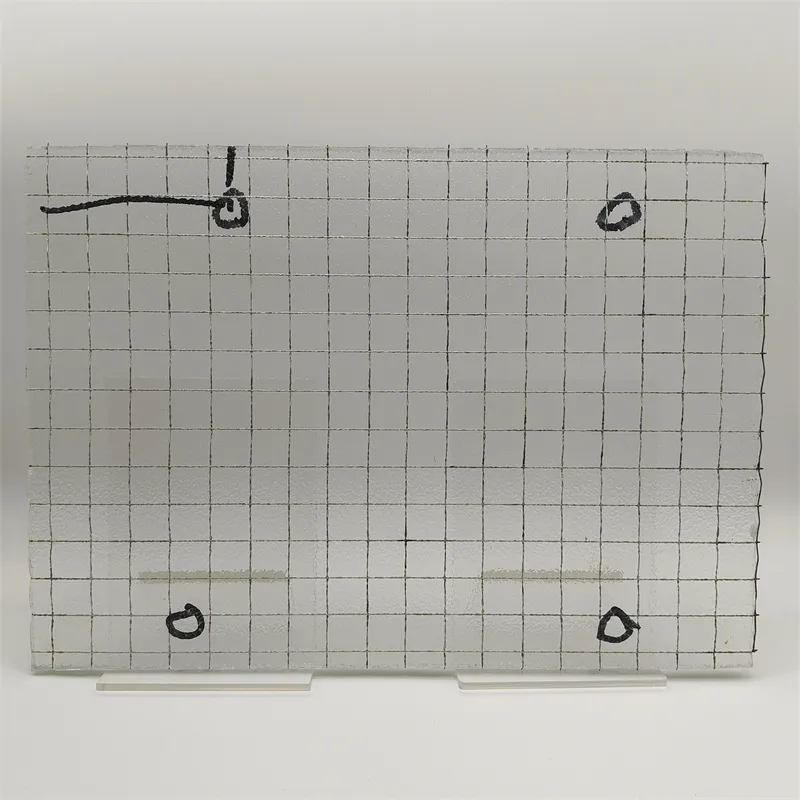Dec . 07, 2024 11:48 Back to list
flat laminated glass
Understanding Flat Laminated Glass Benefits and Applications
Flat laminated glass has become a popular choice for a wide array of architectural and design applications due to its unique properties and aesthetic appeal. This type of glass is achieved by sandwiching a layer of polyvinyl butyral (PVB) or ethylene-vinyl acetate (EVA) between two or more sheets of glass, creating a single composite unit. This process not only enhances the strength and safety of the glass but also allows for various design possibilities. Here, we delve into the benefits and applications of flat laminated glass, highlighting why it's a favored material in modern construction and design.
Safety and Security
One of the primary advantages of flat laminated glass is its increased safety attributes. In the event of breakage, laminated glass holds together due to the interlayer, reducing the risk of injury from sharp shards. This characteristic makes it an ideal choice for environments where safety is a crucial concern, such as schools, public buildings, and residential areas. Furthermore, laminated glass can provide a higher level of security against forced entry, making it a reliable option for commercial properties and buildings that require added security measures.
Sound Insulation
Another significant benefit of flat laminated glass is its superior sound insulation properties. The laminated structure effectively dampens noise, making it an excellent choice for buildings located in noisy urban environments or near busy roads. By incorporating laminated glass into windows and partitions, architects can create quieter indoor spaces, enhancing comfort and productivity for occupants.
UV Protection and Energy Efficiency
Flat laminated glass also offers substantial advantages in terms of energy efficiency and UV protection. The interlayer used in laminated glass can block up to 99% of harmful ultraviolet (UV) rays, safeguarding interiors from fading and minimizing potential skin damage for occupants. This characteristic is particularly beneficial for museums, galleries, and homes with valuable artworks and furnishings. Additionally, laminated glass can help to regulate indoor temperatures by reducing the amount of heat that enters a building, thus contributing to lower energy bills.
flat laminated glass

Aesthetic Appeal
From an aesthetic standpoint, flat laminated glass opens up a world of design possibilities. It can be produced in various thicknesses, colors, and finishes, enabling architects and designers to create visually striking spaces. By using tinted or frosted laminated glass, designers can achieve privacy while still allowing natural light to permeate. Furthermore, laminated glass is often utilized for decorative purposes, such as in glass facades, railings, and canopies, enhancing the overall architectural vision.
Applications in Architecture and Design
The versatility of flat laminated glass extends to a wide range of applications. In commercial buildings, it is commonly used for storefronts, office partitions, and glass walls, providing not only a contemporary look but also functionality and safety. In residential settings, homeowners often choose laminated glass for windows, patio doors, and shower enclosures, benefiting from enhanced security and noise reduction.
Moreover, flat laminated glass is increasingly being used in the automotive industry for windshields and side windows. The same properties that make it beneficial for buildings—safety, sound insulation, and UV protection—are equally vital for vehicles, thereby improving occupant safety and comfort.
Conclusion
Flat laminated glass stands out as a versatile and beneficial material, combining safety, sound insulation, energy efficiency, and aesthetic appeal. Its innovative properties make it a preferred choice in various applications across architectural and design fields. As the demand for sustainable and safe building materials continues to rise, flat laminated glass is poised to play an essential role in shaping modern architecture and enhancing daily life. Whether in homes, commercial buildings, or vehicles, the advantages of flat laminated glass are undeniable, ensuring its place as a key player in contemporary construction practices.
-
Safety and Style with Premium Laminated Glass Solutions
NewsJun.24,2025
-
Reinvents Security with Premium Wired Glass
NewsJun.24,2025
-
Premium Float Glass Line for Modern Architecture
NewsJun.24,2025
-
Low Emissivity Glass for Energy-Efficient Architecture
NewsJun.24,2025
-
High-Performance Insulated Glass Solutions for Modern Architecture
NewsJun.24,2025
-
Elevates Interior Style with Premium Silver Mirror
NewsJun.24,2025
Related PRODUCTS














